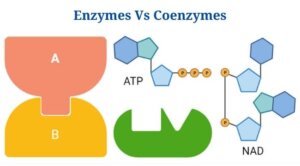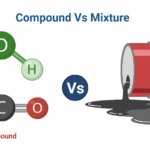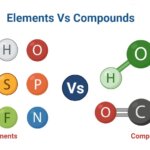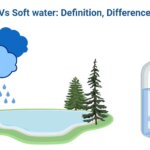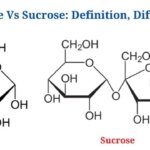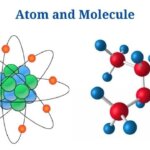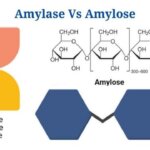Definition of Enzymes
- Enzymes are biological molecules that operate as biological catalysts in living systems, speeding up the rate of chemical reactions.
- Enzymes are proteins that act on compounds known as substrates to create other molecules known as products.
- Enzymes are required for the majority of metabolic processes in biological systems to occur at rates that support life.
- Enzymes are made up of protein as well as non–protein molecules referred to as holoenzymes.
- The two distinct units collaborate to act on the substrate as well as produce the required product in the timeframe specified.
- Enzymes function by lowering the activation energy of a reaction, allowing it to proceed millions of times faster in the presence of enzymes.
- Since enzymes are very selective, they can only work on certain substrates. The structural qualities of the specificity can be observed.
- Enzymes aren’t used during chemical reactions as well as can be restored afterward. Enzymes have no effect on the equilibrium of these processes.
- Enzymes are big molecules that are made up of a protein unit as well as a coenzyme or cofactor. Apoenzyme is a protein unit that lacks a cofactor or coenzyme as well as hence cannot operate as an enzyme.
- Every enzyme has an active site that determines the enzyme’s specificity. The substrate attaches to the active site, as well as the enzyme’s specificity is determined by the active site structure.
Definition of Coenzymes
Unlike the protein part of an enzyme, coenzymes are altered during chemical reactions as well as may require a second enzyme-mediated reaction to restore them.
- Coenzymes, like in chemical processes, participate in enzyme-mediated catalysis in stoichiometric proportions.
- Coenzymes, unlike the protein component of an enzyme, undergo modification during the chemical process and may require a second enzyme-mediated reaction to be restored.
- Coenzymes are classified into two types: prosthetic groups and cosubstrates.
- Prosthetic groups are organic groups that are covalently and permanently linked to the enzyme’s protein unit.
- Cosubstrates, on the other hand, are only transiently bound to the proteins and hence can only be attached during the enzymatic process.
- Coenzymes are created in the biological system during chemical reactions and are not consumed through diet.
- In nature, these molecules are normally thermostable and dialyzable, remaining either linked to the protein or in the cell’s cytoplasm.
- Coenzymes make up only 1% of the overall volume of the enzyme, with the remainder taken up by the protein unit.
- Coenzymes transfer chemical groups to the protein unit, such as hydride ions, methyl groups, or acyl groups.
- The coenzyme’s structure is altered as a result of its binding to the protein unit. Coenzymes are frequently referred to as second substrates.
- When compared to the final enzymatic product, coenzymes are typically lower in size and weight.
Image Created with BioRender
Key Difference between Enzymes and Coenzymes
(Enzymes Vs Coenzymes)
[ninja_tables id=”5604″]
Enzymes examples
Lipase
- Lipase is a catalytic enzyme that catalyses the breakdown of lipids, that are required for numerous metabolic activities such as digestion, transport, as well as processing of lipids in living systems.
- Lipases are an esterase family that hydrolyzes the ester bond in lipid molecules.
- Lipases manufacture appropriate products by acting at a precise point on the glycerol backbone of the substrate.
- Despite the fact that lipases are created by specific cells in living systems, pathogens may express as well as secrete lipases during infection.
- The pancreas as well as liver manufactures the majority of human lipases that are found in the digestive tract. These are designed to work with certain lipid molecules.
Coenzymes examples
Thiamine pyrophosphate
- Thiamine pyrophosphate is formed from thiamine or Vitamin B1 as well as is involved in the synthesis of thiamine diphosphokinase, an enzyme.
- It’s an organic molecule that can be present in all living things as well as catalyses carbohydrate hydrolysis reactions.
- Thiamine pyrophosphate is produced in the cytoplasm as well as serves as a cofactor for a number of enzymes, including transketolase as well as pyruvate- as well as oxoglutarate-dehydrogenases.
- The molecule also aids in the creation of important metabolic byproducts or molecules such as ATP, NADPH, as well as ribose-5-phosphate that are required for cellular energy generation.
- Reversible decarboxylation of carbon compounds is also catalysed by thiamine pyrophosphate.
- Vitamin B1 deficiency may be one of the reasons of Korsakoff Syndrome in those who are addicted to alcohol.
Enzymes Vs Coenzymes Citations
- Berg JM et al. (2012) Biochemistry. Seventh Edition. W. H Freeman and Company
- https://www.thoughtco.com/activation-energy-example-problem-609456
- https://www.creative-enzymes.com/product/immobilized-lipase-from-pseudomonas-sp_1933.html
- https://thechemistrynotes.com/cofactors-vs-coenzymes/
- https://microbiologyclass.com/enzymes-definition-and-mechanism-of-action/
- https://en.wikipedia.org/wiki/Lipase
- https://en.wikipedia.org/wiki/Enyme_characteristics
- https://courses.lumenlearning.com/boundless-microbiology/chapter/organic-compounds/
- https://bristolsciencetutor.files.wordpress.com/2012/05/enzymes.pdf
- https://www.wikihow.com/Calculate-the-Concentration-of-a-Solution
- https://www.sciencedirect.com/topics/neuroscience/coenzymes
Related Posts
- Dissecting Microscope (Stereo Microscope) Definition, Principle, Uses, Parts
- Saturated vs Unsaturated Hydrocarbons: Definition, Differences, Examples
- Ethanol Vs Methanol: Definition and 10+ Differences
- Hydrogen Bond: Properties, Definition, Types, Examples
- Nitrate Vs Nitrite: Definition, Differences, Examples
- Aromatic Compounds vs Aliphatic Compounds: Definition, Differences, Examples
- Compound Vs Mixture: Definition, Differences, Examples
- Elements Vs Compounds: Definition, Differences, Examples
- Molecules Vs Compounds: Definition, Differences, Examples
- Hard water Vs Soft water: Definition, Differences, Examples
- Glucose Vs Sucrose: Definition and Key Differences
- 13+ Difference Between Atom and Molecule with Examples
- How to Balance Chemical Equation: Methods, Steps, Examples
- Ionic Bond: Definition, Properties, Examples
- Amylase Vs Amylose: Definition, Differences, Example

